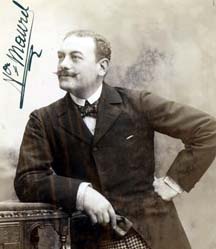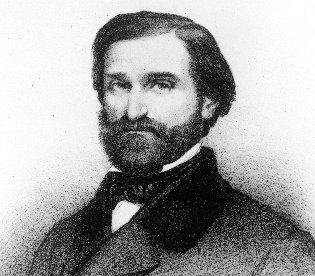|
Hugo Avendaño
Hugo Avendaño Espinoza (8 March 1927 – 5 January 1998) was a Mexican singer and actor. Career He was a student of the Faculty of Medicine, UNAM, but abandoned his intended career in medicine to study singing as a baritone. He began his studies at the Academy of Singing, where his teacher was Jose Pierson, whose other students included José Mojica, Alfonso Ortiz Tirado, Fanny Anitúa, Jorge Negrete, Pedro Vargas, Ramón Vinay, Francisco Avitia and José Sosa Esquivel. Later, he studied in New York at the Metropolitan Opera House with the baritone Leonard Warren among others. In 1950 he debuted at the Palacio de Bellas Artes in Mexico, playing the role of Amonasro in Verdi's ''Aida''. He participated in several opera seasons in Mexico City, Guadalajara, Monterrey and Veracruz. His repertoire included operas such as ''Rigoletto'', '' Il trovatore'', '' La traviata'' ''Pagliacci'', ''Faust'', '' Un ballo in maschera'', ''Tosca'', ''Carmen'' and ''Madama Butterfly'', where he ... [...More Info...] [...Related Items...] OR: [Wikipedia] [Google] [Baidu] |
Tuxpan
Tuxpan (or Túxpam, fully Túxpam de Rodríguez Cano, for Enrique Rodríguez Cano) is both a municipality and city located in the Mexican state of Veracruz. The population of the city was 89,557 and of the municipality was 154,600 inhabitants, according to the INEGI census of 2020, residing in a total area of . The municipality includes many smaller outlying communities, the largest of which are Alto Lucero (20,380 inhabitants) and Santiago de la Peña (8,178 inhabitants). A local beachside community is also nearby. In the 1870s, a small colony of some hundreds of former Confederate (Southern U.S.) officers, soldiers and diplomats was established. Name Tuxpan or Túxpam, pronounced in Nahuatl, the language of the ancient Nahuas, literally means "Place of Rabbits", a compound of ''tochtli'' "rabbit" and ''-pan'' "place". Economy Being the nearest port to Mexico City, Tuxpan is an important commercial link for Mexican imports and exports. Tuxpan is now primarily a grain p ... [...More Info...] [...Related Items...] OR: [Wikipedia] [Google] [Baidu] |
Palacio De Bellas Artes
The Palacio de Bellas Artes (Palace of Fine Arts) is a prominent cultural center in Mexico City. It hosts performing arts events, literature events and plastic arts galleries and exhibitions (including important permanent Mexican murals). "Bellas Artes" for short, has been called the "art cathedral of Mexico", and is located on the western side of the historic center of Mexico City which is close to the Alameda Central park. Bellas Artes replaced the original National Theater, built in the late 19th century. The latter was demolished as part of urban redesign in Mexico City, and a more opulent building was planned to celebrate the centennial of the Mexican War of Independence in 1910. The initial design and construction was undertaken by Italian architect Adamo Boari in 1904, but complications arising from the soft subsoil and the political problem both before and during the Mexican Revolution, hindered then stopped construction completely by 1913. Construction resumed in 193 ... [...More Info...] [...Related Items...] OR: [Wikipedia] [Google] [Baidu] |
Madama Butterfly
''Madama Butterfly'' (; ''Madame Butterfly'') is an opera in three acts (originally two) by Giacomo Puccini, with an Italian libretto by Luigi Illica and Giuseppe Giacosa. It is based on the short story " Madame Butterfly" (1898) by John Luther Long, which in turn was based on stories told to Long by his sister Jennie Correll and on the semi-autobiographical 1887 French novel '' Madame Chrysanthème'' by Pierre Loti.Chadwick Jenna"The Original Story: John Luther Long and David Belasco" on columbia.edu Long's version was dramatized by David Belasco as the one-act play '' Madame Butterfly: A Tragedy of Japan'', which, after premiering in New York in 1900, moved to London, where Puccini saw it in the summer of that year. The original version of the opera, in two acts, had its premiere on 17 February 1904 at La Scala in Milan. It was poorly received, despite having such notable singers as soprano Rosina Storchio, tenor Giovanni Zenatello and baritone Giuseppe De Luca in le ... [...More Info...] [...Related Items...] OR: [Wikipedia] [Google] [Baidu] |
Carmen
''Carmen'' () is an opera in four acts by the French composer Georges Bizet. The libretto was written by Henri Meilhac and Ludovic Halévy, based on the novella of the same title by Prosper Mérimée. The opera was first performed by the Opéra-Comique in Paris on 3 March 1875, where its breaking of conventions shocked and scandalised its first audiences. Bizet died suddenly after the 33rd performance, unaware that the work would achieve international acclaim within the following ten years. ''Carmen'' has since become one of the most popular and frequently performed operas in the classical canon; the " Habanera" and "Seguidilla" from act 1 and the " Toreador Song" from act 2 are among the best known of all operatic arias. The opera is written in the genre of ''opéra comique'' with musical numbers separated by dialogue. It is set in southern Spain and tells the story of the downfall of Don José, a naïve soldier who is seduced by the wiles of the fiery gypsy Carmen. Jos� ... [...More Info...] [...Related Items...] OR: [Wikipedia] [Google] [Baidu] |
Tosca
''Tosca'' is an opera in three acts by Giacomo Puccini to an Italian libretto by Luigi Illica and Giuseppe Giacosa. It premiered at the Teatro dell'Opera di Roma, Teatro Costanzi in Rome on 14 January 1900. The work, based on Victorien Sardou's 1887 French-language dramatic play, ''La Tosca'', is a melodramatic piece set in Rome in June 1800, with the Kingdom of Naples's control of Rome threatened by Napoleon's Campaigns of 1800 in the French Revolutionary Wars#Italy, invasion of Italy. It contains depictions of torture, murder, and suicide, as well as some of Puccini's best-known lyrical arias. Puccini saw Sardou's play when it was touring Italy in 1889 and, after some vacillation, obtained the rights to turn the work into an opera in 1895. Turning the wordy French play into a succinct Italian opera took four years, during which the composer repeatedly argued with his librettists and publisher. ''Tosca'' premiered at a time of unrest in Rome, and its first performance was delayed ... [...More Info...] [...Related Items...] OR: [Wikipedia] [Google] [Baidu] |
Pagliacci
''Pagliacci'' (; literal translation, 'Clowns') is an Italian opera in a prologue and two acts, with music and libretto by Ruggero Leoncavallo. The opera tells the tale of Canio, actor and leader of a commedia dell'arte theatrical company, who murders his wife Nedda and her lover Silvio on stage during a performance. ''Pagliacci'' premiered at the Teatro Dal Verme in Milan on 21 May 1892, conducted by Arturo Toscanini, with Adelina Stehle as Nedda, Fiorello Giraud as Canio, Victor Maurel as Tonio, and Mario Ancona as Silvio. Soon after its Italian premiere, the opera played in London (with Nellie Melba as Nedda) and in New York (on 15 June 1893, with Agostino Montegriffo as Canio). ''Pagliacci'' is the best-known of Leoncavallo's ten operas and remains a staple of the repertoire. ''Pagliacci'' is often staged with ''Cavalleria rusticana'' by Pietro Mascagni, a double bill known colloquially as "Cav/Pag". Origin and disputes Leoncavallo was a little-known composer when Pietro Masc ... [...More Info...] [...Related Items...] OR: [Wikipedia] [Google] [Baidu] |
Rigoletto
''Rigoletto'' is an opera in three acts by Giuseppe Verdi. The Italian libretto was written by Francesco Maria Piave based on the 1832 play '' Le roi s'amuse'' by Victor Hugo. Despite serious initial problems with the Austrian censors who had control over northern Italian theatres at the time, the opera had a triumphant premiere at La Fenice in Venice on 11 March 1851. The work, Verdi's sixteenth in the genre, is widely considered to be the first of the operatic masterpieces of Verdi's middle-to-late career. Its tragic story revolves around the licentious Duke of Mantua, his hunch-backed court jester Rigoletto, and Rigoletto's daughter Gilda. The opera's original title, ''La maledizione'' (The Curse), refers to a curse placed on both the Duke and Rigoletto by the Count Monterone, whose daughter the Duke has seduced with Rigoletto's encouragement. The curse comes to fruition when Gilda falls in love with the Duke and sacrifices her life to save him from the assassin hired by he ... [...More Info...] [...Related Items...] OR: [Wikipedia] [Google] [Baidu] |
Veracruz (city)
Veracruz (), also known as Heroica Veracruz, is a major port city and municipal seat for the surrounding municipality of Veracruz on the Gulf of Mexico and the most populous city in the Mexican state of Veracruz. The city is located along the coast in the central part of the state, southeast of the state capital Xalapa. It is the most populous city in the state of Veracruz. Part of the city extends into the neighboring municipality of Boca del Río. At the 2020 census, Veracruz Municipality had a population of 607,209 inhabitants. The city of Veracruz had a population of 537,952 inhabitants, 405,952 in Veracruz municipality and 132,011 in Boca del Río municipality.2020 census tables: INEGI Developed during Spanish colonization, Veracruz is Mexico's oldest, largest, and historically most significant port. [...More Info...] [...Related Items...] OR: [Wikipedia] [Google] [Baidu] |
Monterrey
Monterrey (, , abbreviated as MtY) is the capital and largest city of the northeastern Mexican state of Nuevo León. It is the ninth-largest city and the second largest metropolitan area, after Greater Mexico City. Located at the foothills of the Sierra Madre Oriental, Monterrey is a major business and industrial hub in North America. The city anchors the Monterrey metropolitan area, the second-largest in Mexico with an estimated population of 5,341,171 people as of 2020 and it is also the second-most productive metropolitan area in Mexico with a GDP (purchasing power parity, PPP) of US$140 billion in 2015. According to the 2020 census, Monterrey itself has a population of 1,142,194. Monterrey is considered one of the most livable cities in Mexico, and a 2018 study ranked the suburb of San Pedro Garza García as the city with the best quality of life in the country. It serves as a commercial center of northern Mexico and is the base of many significant international corporations ... [...More Info...] [...Related Items...] OR: [Wikipedia] [Google] [Baidu] |








